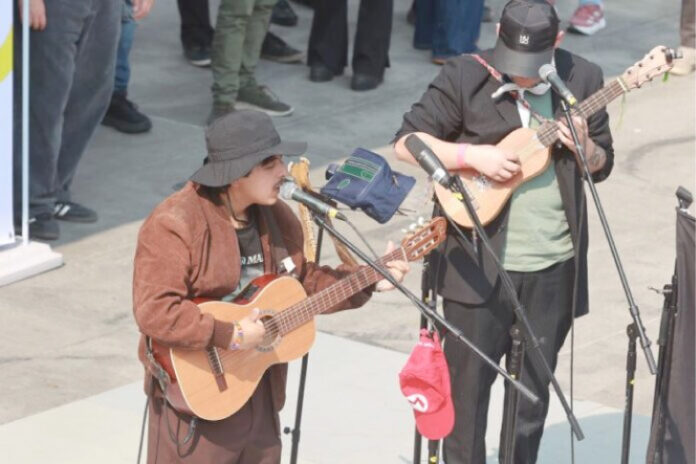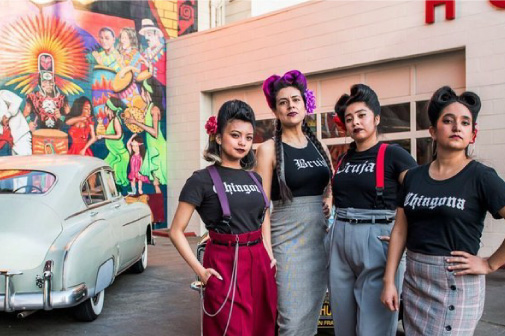por Mexico News Daily
La presidenta Claudia Sheinbaum instó el miércoles a una mayor integración económica regional durante un discurso pronunciado en una reunión de líderes latinoamericanos y caribeños en Tegucigalpa, Honduras.
“Hoy les tengo una propuesta”, dijo Sheinbaum a los presidentes y primeros ministros en la cumbre de la Comunidad de Estados Latinoamericanos y Caribeños (CELAC) en la capital hondureña.
“Los invito, CELAC, a convocar una ‘Cumbre para el Bienestar Económico de América Latina y el Caribe’ para hacer realidad una mayor integración económica regional”, afirmó.
Sheinbaum abogó por una mayor integración económica entre países como México, Brasil, Chile, Guatemala, Honduras y Jamaica, basada en la “prosperidad compartida y el respeto a nuestras soberanías”. Su discurso en la cumbre del bloque de 33 naciones del hemisferio occidental, con 14 años de existencia, se produjo en un momento en que Estados Unidos es percibido cada vez más como un socio comercial impredecible y poco confiable.
La semana pasada, el presidente estadounidense, Donald Trump, impuso aranceles recíprocos generalizados, en algunos casos muy elevados, a decenas de países, para luego anunciar el miércoles una pausa inmediata de 90 días y una reducción sustancial del arancel recíproco durante este período, del 10 por ciento para numerosos países, a la vez que aumentó el arancel estadounidense sobre los productos chinos al 125 por ciento.
En su discurso, Sheinbaum informó a sus homólogos latinoamericanos y caribeños que se están produciendo cambios profundos en el comercio mundial que afectan a nuestros países.
“Cada uno de nosotros busca legítimamente lo mejor para nuestros pueblos y naciones”, afirmó. “Sin embargo, creo que hoy, más que nunca, es un buen momento para reconocer que América Latina y el Caribe necesita la unidad y la solidaridad de los gobiernos y sus pueblos para fortalecer la integración regional, siempre en el marco del respeto mutuo y la observancia de la soberanía e independencia de nuestros países y de los acuerdos comerciales que cada uno tenga”, afirmó Sheinbaum.
México tiene tratados de libre comercio con Chile y Colombia, y forma parte de la Alianza del Pacífico con estos dos países y Perú. Sin embargo, no existe un pacto comercial que abarque a todos los países de la CELAC.
Sheinbaum afirmó que “una región más unida es una región más fuerte, capaz de articular soluciones y propuestas concretas para la integración regional y acciones de cooperación en comercio, educación, ciencia, desarrollo tecnológico, energías limpias y conservación de la biodiversidad, con la visión de construir siempre sociedades más igualitarias”.
“Ningún país de América Latina y el Caribe debe quedar atrás, ningún niño o niña de América Latina y el Caribe debe quedar atrás, ningún hombre o mujer de América Latina y el Caribe debe quedar atrás”, añadió.
Nuestra gente es “todavía joven”, nuestra tierra “todavía fértil”
Sheinbaum destacó que la población combinada y “todavía joven” de América Latina y el Caribe “alcanza los 663 millones de personas”, mientras que el PIB de la región ronda los 6.6 billones de dólares.
“Somos el principal exportador neto de alimentos del mundo”, añadió.
“Nuestra tierra aún es fértil… Contamos con más del 30 por ciento de los bosques primarios del planeta, el 33 por ciento de su agua dulce, casi el 20 por ciento de las reservas mundiales de petróleo, al menos el 25 por ciento de las reservas minerales estratégicas, y somos capaces de construir un desarrollo con justicia y cuidado del medio ambiente”, afirmó Sheinbaum.
“…Los pueblos latinoamericanos y caribeños estamos unidos por la historia, la cultura y la geografía de un continente que se extiende sobre dos hemisferios y entre dos océanos. El comercio y el intercambio económico nos han unido durante siglos”, afirmó.
“…La historia de América Latina y el Caribe, desde la lucha por nuestra independencia, se ha caracterizado por la solidaridad y el apoyo mutuo. Hoy no debería ser la excepción. Son tiempos de mayor voluntad para promover el progreso y el bienestar de nuestros pueblos”, concluyó Sheinbaum. Sheinbaum y Lula sostienen conversaciones bilaterales en la CELAC
Entre los jefes de Estado presentes en la cumbre de la CELAC, organizada por la presidenta hondureña Xiomara Castro en Tegucigalpa, se encontraban el presidente colombiano Gustavo Petro, quien asumió la presidencia del bloque regional; el presidente cubano Miguel Díaz-Canel; el presidente guatemalteco Bernado Arévalo; y el presidente brasileño Luiz Inácio Lula da Silva.
Sheinbaum y Lula, líderes de las dos mayores economías de América Latina, mantuvieron una reunión bilateral en el marco de la cumbre.
“Me reuní esta mañana con la presidenta de México @Claudiashein”, escribió Lula en redes sociales.
“Conversamos sobre la situación económica en América Latina y el Caribe, y en el mundo. Decidimos fortalecer aún más las relaciones entre nuestros países mediante la promoción de reuniones periódicas entre nuestros gobiernos y los sectores productivos de la industria de Brasil y México”, afirmó.
El comercio bilateral entre México y Brasil superó los 16,000 millones de dólares en 2023, según el Ministerio de Economía. Brasil vendió más de 12 mil millones de dólares en bienes a México, mientras que las exportaciones mexicanas al país más grande de Sudamérica totalizaron poco más de 4 mil millones de dólares.
En septiembre pasado, las autoridades brasileñas y mexicanas abogaron por la revisión del acuerdo comercial vigente entre ambos países para fortalecer los lazos bilaterales.
Un pacto comercial entre México y Brasil, firmado a principios de la década de 2000, “establece la exención o reducción de aranceles de importación para unos 800 tipos de productos”, informó Reuters.
El ministro de Economía, Marcelo Ebrard, declaró en septiembre pasado que “el crecimiento de nuestra relación ya ha superado ese acuerdo”.
“Necesitamos actualizarlo”, añadió.












